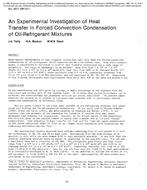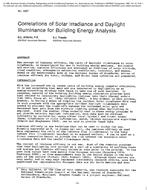-
-
Available Formats
- Options
- Availability
- Priced From ( in USD )
-
Available Formats
-
- Immediate download
- $16.00
- Add to Cart
Customers Who Bought This Also Bought
-

2877 (RP-221) -- An Experimental Investigation of Heat Tr...
Priced From $16.00 -

2862 -- State of the Art: The Capillary Tube for, and in,...
Priced From $16.00 -

2867 -- Correlations of Solar Irradiance and Daylight Ill...
Priced From $16.00 -

2885 (RP-295) -- Finned-Tube Contact Conductance: Investi...
Priced From $16.00
About This Item
Full Description
The human response to the thermal environment depends in part on the temporal nature of the exposure. One aspect of the temporal dimension includes ramps or drifts that are brought about. when the heating or cooling system is turned off. When this occurs, the shape of the drift depends upon the outdoor temperature and wind velocity, the solar load, the building shell, the interior location of the occupant, and the thermal load, including the occupant density and machinery. A corporation in Arlington Heights, IL, has developed a model that will predict the temperature drifts at various locations within the occupied space when the HVAC system is shut down. This regulation of the office temperature before workers leave for the day represents an energy-saving strategy. The purpose of this study was to examine the comfort response of humans when exposed to drifts that. began 0.5 h and 1.0 h before the normal departure of the employees. Drifts were examined at four conditions: interior, west and north building locations, and a control or no drift condition. The results for the 1.0 h drift showed that no source of variance was significant for the thermal comfort votes. Location, however, was significant. for the thermal sensation votes. For the 0.5 h drift, the only source of significance was the location x sex interaction for the thermal comfort votes. A discussion of the implication of the results as an energy-conservation strategy is provided.





